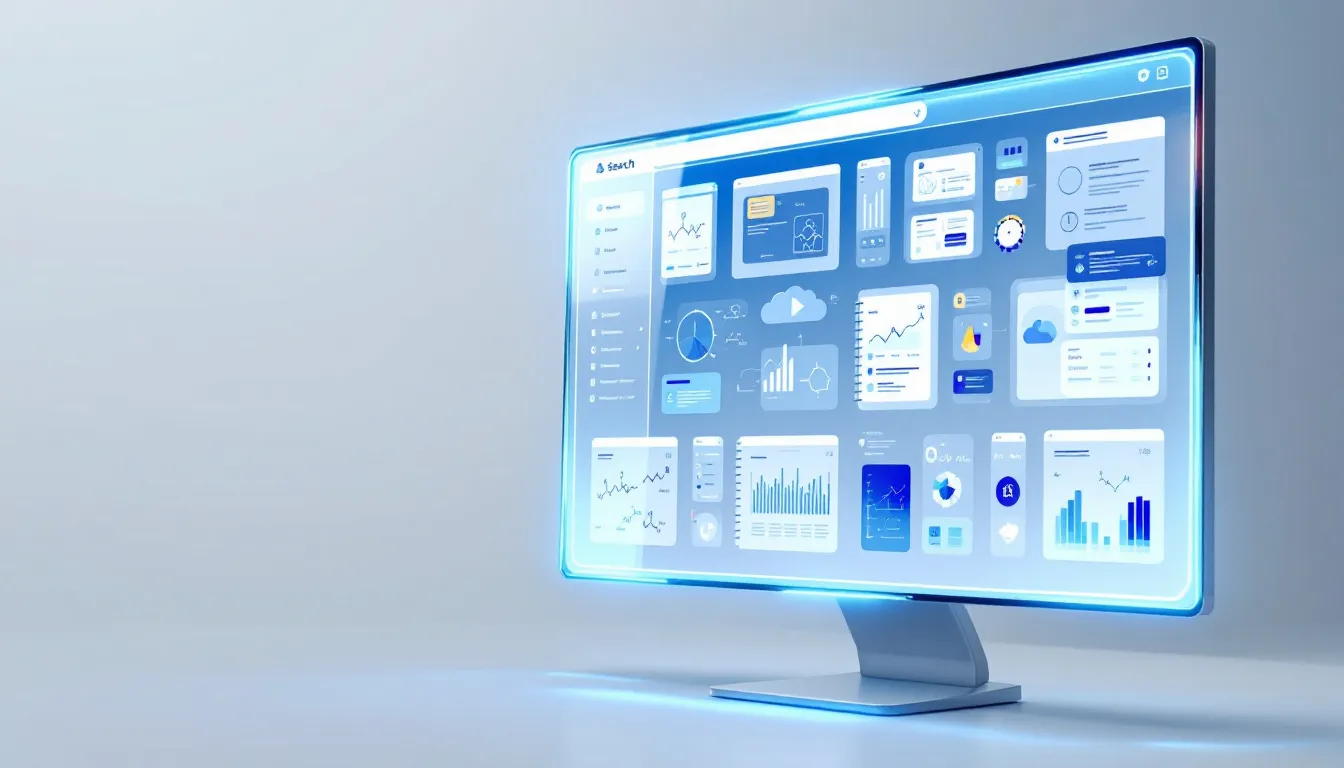Electronic lab notebooks (ELNs) are digital tools that replace paper lab notebooks, giving researchers an organized and secure way to document their work.
In this article we will look at what are electronic lab notebooks, their features, how they help scientific research and why they are better than paper notebooks.
Key Points
-
Electronic Lab Notebooks (ELNs) manage data by providing structured, organized and secure environments for researchers to document their work, making it more accessible and collaborative.
-
Features of ELNs include advanced search, robust data security, automation and seamless integration with existing lab systems which reduces manual data entry and errors.
-
Implementing ELNs requires planning, usability testing and consideration of data protection regulations to ensure compliance and security, to make the transition from paper to digital documentation smooth.
What Are Electronic Lab Notebooks

Electronic lab notebooks (ELNs) are digital tools that replace paper lab notebooks. Their purpose is to provide a structured, organized and secure environment for researchers to document their work. An electronic laboratory notebook is a digital platform that replaces traditional paper lab notebooks, it emphasizes on data documentation, security and collaboration. Unlike paper notebooks, electronic laboratory notebooks provide a permanent digital archive of research data which makes data more long lived and accessible to future researchers. This is especially useful in fields like molecular biology where data volume and complexity is overwhelming. ELNs help preserve scientific data and make it accessible for future interrogation. An electronic lab notebook ELN can simplify this process. As a software tool, an ELN streamlines laboratory documentation and supports research data management by offering specialized digital features.
ELNs have changed the way data is recorded and accessed in research labs. They simplify the documentation process, making it easier for researchers and scientists to document and organize scientific data and experimental data. No more flipping through pages of handwritten notes, researchers can search for specific data points or experiments in seconds using advanced search. This saves time and reduces errors associated with manual record keeping. Modern science has played a big role in these advancements.Also ELNs have changed the traditional paper notebooks by allowing data sharing and collaboration among researchers. With electronic research notebooks multiple users can access and contribute to the same project from different locations, creating a collaborative research environment. This level of accessibility and collaboration is not possible with paper notebooks making ELNs a must have in modern scientific research.
Features of Electronic Lab Notebooks

One of the key features of electronic lab notebooks is advanced searching. Researchers can search through vast amounts of data making it easier to find specific information when needed. Searching through conventional lab notebooks may take hundreds or even thousands of man-hours. This feature alone can greatly improve the overall efficiency and productivity of research labs as mentioned in plos computational biology. Technology plays a big role in this.
Data security is another important feature of ELNs. These digital tools have robust security measures and auditing features to ensure sensitive information is well protected. It is crucial to evaluate the security level of ELNs, including their security protocols and data encryption standards, to ensure sensitive research data is safeguarded. With ELNs researchers can be sure their valuable data is safe from unauthorized access and breaches. Many ELNs also support remote access so researchers can access and input data from anywhere, which is a big advantage in today’s connected world.
Collaboration is also improved with ELNs. Researchers can share data and work on projects simultaneously, streamlining the research process and teamwork. Some ELNs even have automation features like automatic data entry or linking experiments with raw data files which can further increase efficiency in the lab. ELNs can also be used to create templates for protocols and workflows, providing significant time savings. Integrating ELNs with other digital tools improves workflow and data management.
How ELNs Help Scientific Research

Electronic lab notebooks play a big role in scientific research by providing a systematic way to document protocols, observations and other data. This organized documentation helps researchers to keep high quality records which is important for reproducibility and validation of scientific findings. A big advantage of ELNs is that it promotes better data management practices so research data is accurately recorded and easily accessible.
Also ELNs helps researchers to avoid illegible handwriting so experimental details are clearly documented. This clarity is important for data analysis and interpretation, reducing the chance of misinterpretation or errors. Ability to access research documentation from anywhere with internet connection allows researchers to continue their work without interruption, further improving productivity and collaboration.The collaborative aspect of ELNs cannot be emphasized enough. ELNs create a collaborative research environment by allowing easy sharing of data and documentation among researchers. This is especially important for large projects or multi-institutional collaborations where data sharing and communication is key to success. Overall ELNs offer many benefits that can greatly improve scientific research.
Benefits Over Paper Laboratory Notebooks

Moving from paper laboratory notebooks to electronic lab notebooks offers many benefits that can improve research labs efficiency and security. One of the biggest advantages is better data management practices. ELNs allow researchers to organize and search their data much faster than paper notebooks which can be cumbersome and time consuming to manage. Data loss and security are critical concerns with traditional notebooks. Using a paper notebook can also be a challenge for researchers.
Another big benefit of ELNs is reduction of manual data entry. Features like automated data capture and integration with laboratory instruments can save researchers a lot of time and reduce human error. Some ELNs also integrate with MS Office making publication process easier and data review and sharing.
ELNs also improve data integrity by providing better tracking and auditing features including audit trails. This is important for compliance with regulatory requirements and protecting intellectual property. With ELNs every action taken on the data is recorded and timestamped creating a transparent and auditable trail. Evidence to show that an electronic lab notebook meets its specifications is often provided by a Software Requirements Specification (SRS). This level of accountability is hard to achieve with traditional paper notebooks making ELNs a better choice for modern research labs.
Regulatory Compliance and Electronic Lab Notebooks

Electronic lab notebooks (ELNs) are essential for regulatory compliance in scientific research. In today’s research environment keeping accurate, secure and transparent records is not just best practice – it’s often a legal requirement. Regulatory bodies like the FDA require researchers to keep detailed, tamper-proof records of their experiments, data and results. ELNs makes this process easy by providing a secure digital environment where every step of the research process is documented and protected.One of the biggest advantages of electronic lab notebooks is the ability to generate comprehensive audit trails. Every action taken within the ELN – whether it’s data collection, analysis or interpretation – is automatically recorded, time-stamped and attributed to specific users. This level of traceability is critical for meeting regulatory requirements such as 21 CFR Part 11 which governs the use of electronic records in regulated industries. ELNs also support electronic signatures so research data is authenticated and the integrity of the record is maintained. Additionally, electronic lab notebooks used for development or research in regulated industries are expected to comply with FDA regulations related to software validation.
ELNs can be configured to meet specific regulatory frameworks including Good Laboratory Practice (GLP) and Good Manufacturing Practice (GMP). By documenting and tracking research processes in a secure and organized manner ELNs help researchers demonstrate compliance during audits and inspections. Sensitive research data is stored in a secure, access controlled environment reducing the risk of data loss or tampering. The laboratory accreditation criteria found in the ISO 17025 standard needs to be considered for the protection and computer backup of electronic records.
Furthermore electronic lab notebooks can be integrated with other laboratory systems such as Laboratory Information Management Systems (LIMS) to create a comprehensive and compliant record of all research activities. This integration streamlines workflows and ensures all research data is easily accessible and well documented.
By using ELNs researchers meet regulatory requirements and also enhance the transparency and credibility of their scientific research. This commitment to compliance and data integrity is key to maintaining public trust and advancing modern science.
Choosing the Right ELN for Your Lab

Choosing the right electronic lab notebook for your lab is a critical decision that requires careful consideration. Engaging stakeholders like researchers, IT experts and librarians during the selection process promotes collaboration and informed decision making. Involving different perspectives ensures the chosen ELN meets the diverse needs of your lab.
A structured approach is key to effective implementation of ELNs. This means defining specific selection criteria that align with your lab’s unique needs. By doing so you can filter and evaluate available ELNs more effectively and choose a solution that integrates with your existing systems and workflows. ELNs support research workflows by facilitating data management, enhancing collaboration, and ensuring compliance with data standards, which improves research efficiency and data security.
Selection Criteria
Defining clear selection criteria is essential for evaluating different ELNs. You need to assess the ELN’s compatibility with your existing data formats and whether it can integrate seamlessly with current lab systems. Also evaluating the customer support and training options provided by the ELN vendor can greatly impact user adoption and satisfaction.Consider your research institution’s specific needs such as data collection, regulatory requirements and standard operating procedures. Focus on these critical research processes to ensure the chosen ELN supports your lab’s workflows and increases overall productivity.
Usability Testing
Usability testing is a key part of the process. Testing in real world scenarios ensures the ELN integrates with existing lab operations and meets the practical needs of researchers. Test ELNs in parallel with physical lab notebooks to prevent data loss during the testing phase. User feedback during this introduction phase is crucial for identifying integration issues and making adjustments.
Getting feedback from all relevant stakeholders during usability testing ensures the chosen ELN meets the needs of all lab personnel. Gather feedback from researchers and lab assistants in stages to improve ELN acceptance and usability. This collaborative approach will significantly improve the overall effectiveness and adoption of the ELN in your lab.
Implementing Electronic Lab Notebooks in Your Lab

Implementing an electronic lab notebook in your lab involves several steps. A structured approach is required, starting with assessing the lab’s specific needs and testing the ELN in real conditions to ensure it meets workflow requirements. Training staff and setting up the necessary technical equipment infrastructure is also vital to a successful implementation.
Developing protocols for handling sensitive data within ELNs is key to meeting regulatory requirements and data security. Following these processes will ensure a smooth transition from paper lab notebooks to a more efficient and secure digital solution while maintaining the right level of security.
Planning and Rollout
Planning and rolling out an ELN involves several steps. First define the specific needs of your lab, different labs may require varied functionality beyond simple note taking. Testing the ELN through demos and trials is crucial to evaluate performance, usability and compatibility with existing workflows.
Training lab personnel on the ELN’s features and best practices is essential for a successful integration. Monitoring the ELN post implementation and maintaining communication with ELN providers or development communities will help address issues promptly and keep the software up to date.
Handling Sensitive Data
Handling sensitive data in ELNs requires strict adherence to data protection regulations. Involve a data protection officer early in the implementation process to ensure compliance with regulations like the GDPR. This proactive approach will help navigate the complexities of data security and compliance.
Develop strategies for anonymization and pseudonymization as part of your data management plan to protect sensitive information. Establish clear policies for data storage and transfer within ELNs especially when using cloud based solutions. Prioritise data privacy and security for successful ELN implementation.
Integrating ELNs with Research Data Management Strategies

Integrating ELNs with support research data management strategies can significantly enhance data transparency and compliance. ELNs facilitate centralized management of research data, promoting transparency and reproducibility by allowing all data to be stored in one searchable location. This centralized approach supports the FAIR principles—Findability, Accessibility, Interoperability, and Reusability—enhancing the reach and impact of research data.
Nature protocols are frequently referenced as a source of best practices for integrating electronic lab notebooks with research data management strategies. Articles from Nature Protocols provide valuable guidance on effective ELN adoption and workflow integration.
Compliance with regulatory standards, such as FDA requirements, is another crucial aspect of integrated ELNs with data management strategies. Ensuring your ELN supports these standards helps maintain data integrity and control intellectual property.
Best Practices for Using Electronic Lab Notebooks
To maximize the benefits of electronic lab notebooks and ensure the highest standards of scientific data management, it’s essential to follow established best practices. First and foremost, researchers should always use their electronic lab notebook in accordance with institutional guidelines and security protocols. This helps maintain data security and the integrity of research data throughout the research process.
Regularly backing up research data is critical. Researchers should ensure that their ELN software is always up-to-date with the latest security patches and updates, minimizing the risk of data loss or breaches. All research processes, from initial data collection to final results, should be thoroughly documented in the electronic lab notebook. This includes recording raw data, methods, and outcomes, ensuring that every experiment is fully traceable and reproducible.
Organization is key when using electronic lab notebooks. Entries should be clear, concise, and consistently formatted, making use of tags and metadata to facilitate easy searching and retrieval. This logical structure not only supports research data management but also streamlines collaboration within and between research teams.
Collaboration is another important aspect of ELN use. Researchers should leverage their electronic lab notebook to share data securely with colleagues, both within their own lab and with external partners, always adhering to necessary security protocols. Integrating ELNs with other laboratory tools, such as laboratory information management systems (LIMS), can further streamline data collection and management, creating a more efficient and connected research environment.
Documenting standard operating procedures (SOPs) within the ELN ensures that all experiments are conducted according to established protocols, supporting consistency and compliance. Additionally, electronic lab notebooks can be used to track and manage inventory, including samples, reagents, and equipment, helping to keep all lab resources organized and properly labeled.
Finally, it’s important for researchers to regularly review and update their ELN entries. This ongoing process ensures that all data remains accurate, complete, and up-to-date, and that comprehensive audit trails are maintained for every experiment. By following these best practices, researchers can fully leverage the power of electronic lab notebooks to support research data management, enhance data security, and drive scientific discovery forward.
Building a Supportive Community Around ELNs
Creating a supportive community around ELNs can significantly enhance their implementation and use. Establishing mailing lists or forums provides essential platforms for sharing information and best practices among ELN users. Engaging with external communities that utilize the same ELN can facilitate the exchange of experiences and solutions, including support services.
Gathering feedback through systematic collection methods, such as questionnaires and interviews, can help improve the implementation and support process of ELNs. Fostering a collaborative environment allows researchers to share scientific data easily and work more effectively within and beyond their labs.
Contributing to Open-Source ELNs
Contributing to open-source ELNs offers numerous benefits, including customization and cost savings. Open-source ELNs like eLabFTW enable researchers to fully customize their software without incurring high licensing fees. Community contributions often enhance features and improve usability based on user feedback.
Using open-source ELN software helps prevent data lock-in by ensuring data can be exported in various non-proprietary formats. Active communities around open-source ELNs provide support and resources for new users, promoting collective knowledge sharing.
Summary
In summary, electronic lab notebooks offer a myriad of benefits that can significantly enhance the efficiency, security, and collaboration in research labs. From improved data management and security to better compliance with regulatory standards, ELNs are transforming the way scientific research is conducted. Selecting the right ELN and implementing it effectively requires careful planning, stakeholder involvement, and a structured approach.
By integrating ELNs with research data management strategies and building supportive communities, researchers can maximize the potential of these digital tools. Whether you’re considering a proprietary or open-source ELN, the key is to choose a solution that meets your lab’s unique needs and fosters a collaborative research environment. Embrace the future of scientific research with electronic lab notebooks and unlock new levels of productivity and innovation.
Frequently Asked Questions
What are electronic lab notebooks (ELNs)?
Electronic lab notebooks (ELNs) are digital platforms that serve as modern replacements for traditional paper lab notebooks, enabling researchers to securely document and efficiently manage their data. They enhance organization and accessibility in research documentation.
What are the key features of ELNs?
The key features of Electronic Lab Notebooks (ELNs) include advanced search capabilities, robust data security measures, remote access, collaboration tools, and automation features. These functionalities enhance research efficiency and data management in laboratory settings.
How do ELNs benefit scientific research?
ELNs significantly enhance scientific research by improving documentation quality, facilitating data management, and fostering collaboration among researchers. The adoption of ELNs can lead to more efficient and organized research processes.
What should I consider when choosing an ELN for my lab?
When selecting an ELN for your lab, it is crucial to evaluate compatibility with existing systems, data security, usability, customer support, and the specific needs of your laboratory. This thorough consideration will ensure you choose a system that best supports your research activities.
How can I ensure the security of sensitive data in ELNs?
To ensure the security of sensitive data in Electronic Lab Notebooks (ELNs), it is crucial to comply with data protection regulations and involve a data protection officer from the outset. Additionally, strategies such as anonymization and pseudonymization should be implemented to safeguard data integrity.
Share this
You May Also Like
These Related Stories
.png)
What is a LIMS Database: Definition, Function, and Benefits
.png)
What Is A Bidirectional LIMS?


No Comments Yet
Let us know what you think